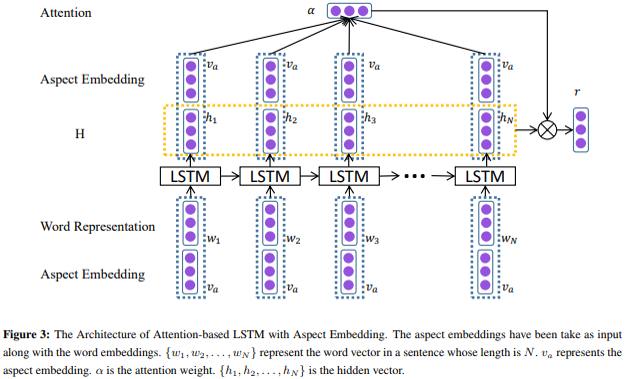Attention-based LSTM for Aspect Level Sentiment Classification (Wang et al. 2016)
Overview
-
Incorporates attention mechanism in LSTM for sentiment classification in aspect level
-
Aspect-level sentiment: distinguishes the sentiment of the input sentence with respect to few pre-defined categories
-
e.g. "The appetizers are ok. but the service is slow"
-
Sentiment of the sentence in the aspect of "taste" : positive
-
Sentiment of the sentence in the aspect of "service" : negative
-
Key Results

-
Architecture
-
Train LSTM with both word & aspect embedding vectors as inputs to capture interdependence of words and aspects simultaneously
-
Concatenate aspect embedding to the hidden representation vector generated from LSTM
-
Using the concatenated vectors from step 2 as input, additional softmax layer is trained as attention mechanism to generate weights for each of the hidden representation vector.
-
Hidden representation vectors are multiplied by their corresponding weights from step 3 to generate attention based hidden representation
-
Hidden representation of the entire sentence is computed by adding the hidden representation computed from LSTM and the hidden representation computed from the attention mechanism in step 4.
-
Final softmax layer trained for classifying aspect level sentiment
-
Comments
-
Essentially, bigger input space through incorporating aspect embedding inevitably increases the model's capacity to capture the useful clues for the classification.
-
Adding attention based hidden representation at the end of LSTM enables the model to emphasize / carry on the impact of the local words that could have been neglected while training LSTM.
-
Although this model successfully captures the dependency between the words and the aspects, each aspect is fed into the model separately, thereby failing to incorporate the interdependence between the aspects.